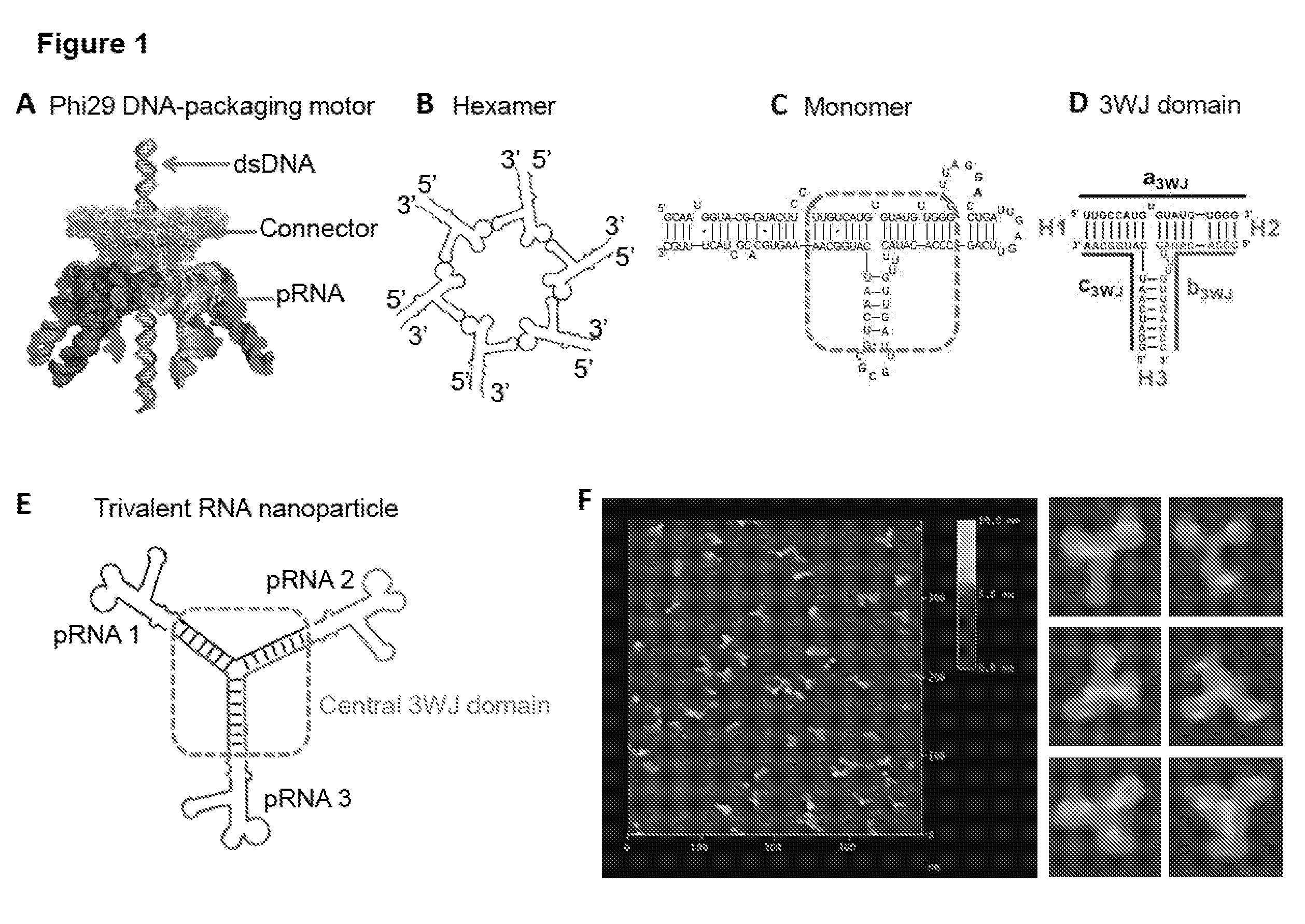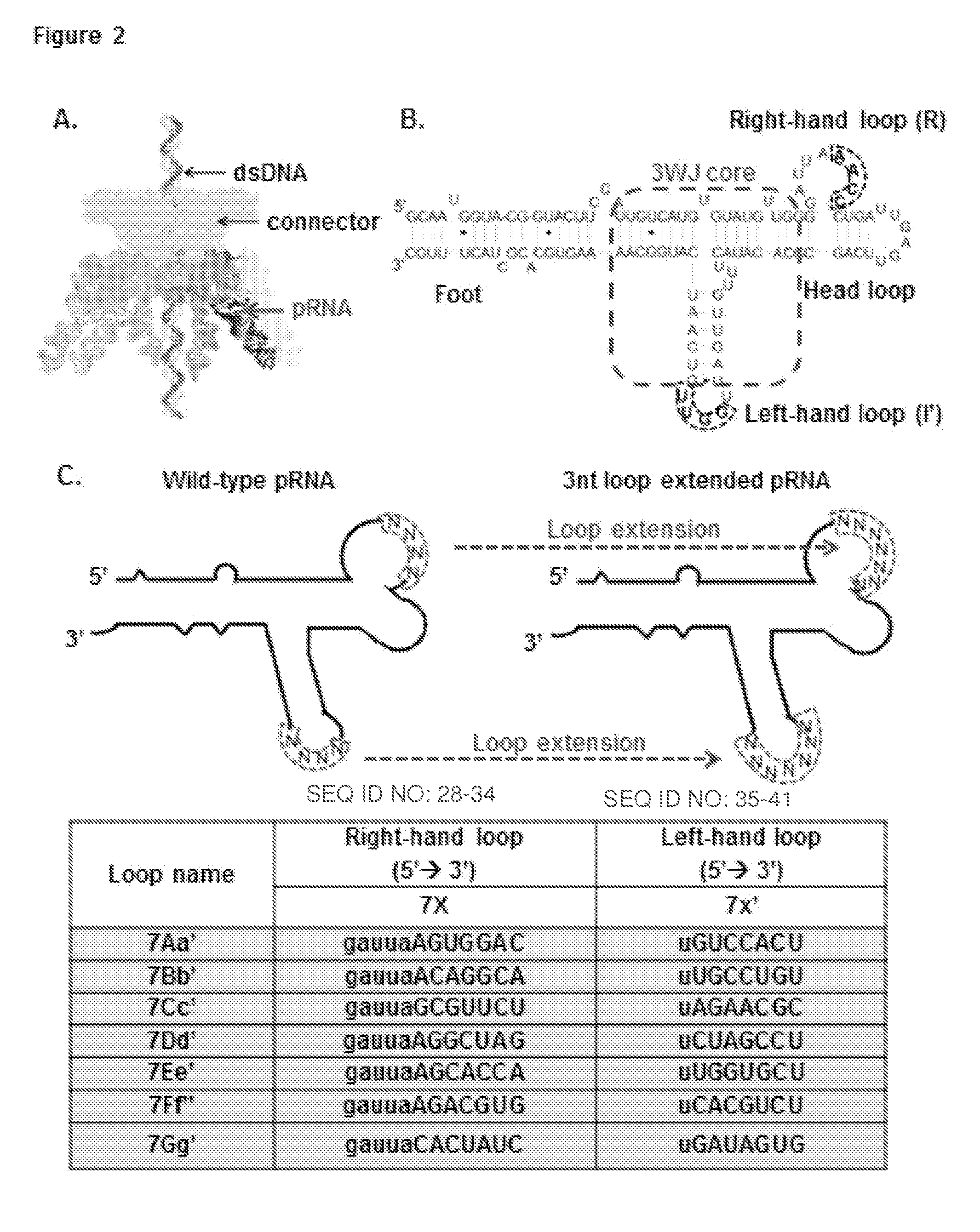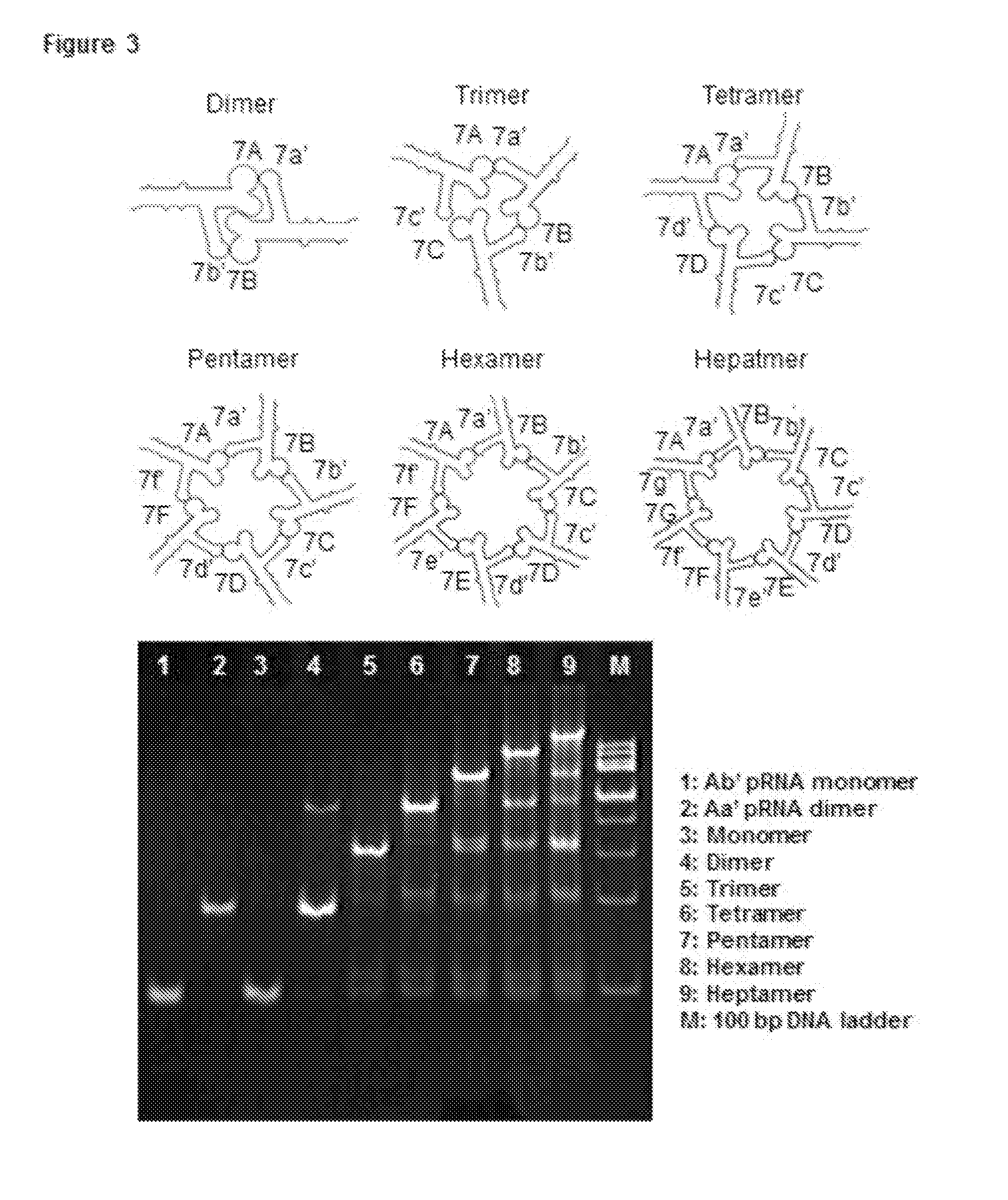pRNA multivalent junction domain for use in stable multivalent RNA nanoparticles
a multivalent junction domain and nanoparticle technology, applied in the field of rna nanoparticles, can solve the problems of affecting the delivery efficiency and therapeutic application of rna nanoparticles, unstable triple-stranded structure, and inability to dissociate at ultra-low concentrations in vivo in human and animal circulation systems,
- Summary
- Abstract
- Description
- Claims
- Application Information
AI Technical Summary
Benefits of technology
Problems solved by technology
Method used
Image
Examples
example 1
Experimental Procedures
[0221]In Vitro Synthesis and Purification of pRNA and Chemically Modified pRNA.
[0222]The pRNAs were synthesized by enzymatic methods as described previously. RNA oligos were synthesized chemically by IDT. 2′-deoxy-2′-Fluoro (2′-F) modified RNAs were synthesized by in vitro transcription with the mutant Y639F T7 RNA polymerase using the 2′-F modified dCTP and dUTP (Trilink).
[0223]Construction and Purification of pRNA Dimers and Trimers.
[0224]Dimers were constructed by mixing equal molar ratios of pRNA Ab′ and Bb′ in presence of 5 mM magnesium [TBM (89 mM Tris, 200 mM Boric Acid, 5 mM MgCl2, pH 7.6) or TMS (89 mM Tris, 5 mM MgCl2, pH 7.6) buffer]. Similarly, trimers were assembled by mixing pRNA Ab′, Bc′, and Ca′. To purify the complex, the band corresponding to the trifurcate domain was excised from 8%0 native PAGE gel, eluted (0.5 M NH4OAC, 0.1 mM EDTA, 0.1% SDS, and 0.5 mM MgCl2) for ˜4 hrs at 37° C., followed by ethanol precipitation overnight. The dried pel...
example 2
Construction of Trifurcate Domain and its Derivatives from Phi29 pRNA
[0277]Unusual Properties Displayed by the Trifurcate Domain Assembled from Three RNA Oligos.
[0278]The trifurcate domain of phi29 pRNA was constructed using three pieces of RNA oligos denoted a3WJ, b3WJ, and c3WJ (FIG. 1D). Two of the oligos a3WJ, and c3WJ were resistant to staining by ethidium bromide (FIG. 9A). Using SYBR Green II RNA gel stain, a3WJ could be weakly stained, while c3WJ remained unstainable (FIG. 9A). Ethidium bromide is an intercalating agent; generally, it can stain dsRNA and dsDNA as well as ssRNA containing secondary structures or base-stacking. SYBR Green II is well known for its ability to stain both single-stranded and double-stranded RNA or DNA. The absence of staining, particularly in c3WJ indicates an unusual structural property.
[0279]The mixing of the three oligos a3WJ, b3WJ, and c3WJ at 1:1:1 stoichiometric ratio at room temperature resulted in unusually high efficient formation of the ...
example 3
Construction of a Variety of Therapeutic RNA Nanoparticles Using the X-Motif as Scaffold
[0313]One of the advantages of RNA Nanotechnology is the feasibility to construct therapeutic particles carrying multiple therapeutics with defined structure and stoichiometry. However, controlled assembly of stable RNA nanoparticles with multiple functionalities to retain original role is challenging due to refolding after fusion. Herein, we report the construction of thermodynamically stable X-shaped RNA nanoparticles to carry four siRNA using reengineered RNA fragments derived from the central domain of the pRNA of bacteriophage phi29 DNA packaging motor. The tetravalent X-shaped nanoparticles self-assemble very efficiently in the absence of divalent salts, resistant to denaturation by 8 Molar urea, and remains intact at ultra-low concentrations. We proved that each arm of the four helixes in the X-motif can harbor one siRNA, ribozyme, or aptamer without affecting the folding of the central pR...
PUM
| Property | Measurement | Unit |
|---|---|---|
| excitation wavelengths | aaaaa | aaaaa |
| excitation wavelengths | aaaaa | aaaaa |
| time | aaaaa | aaaaa |
Abstract
Description
Claims
Application Information
 Login to View More
Login to View More - R&D
- Intellectual Property
- Life Sciences
- Materials
- Tech Scout
- Unparalleled Data Quality
- Higher Quality Content
- 60% Fewer Hallucinations
Browse by: Latest US Patents, China's latest patents, Technical Efficacy Thesaurus, Application Domain, Technology Topic, Popular Technical Reports.
© 2025 PatSnap. All rights reserved.Legal|Privacy policy|Modern Slavery Act Transparency Statement|Sitemap|About US| Contact US: help@patsnap.com



